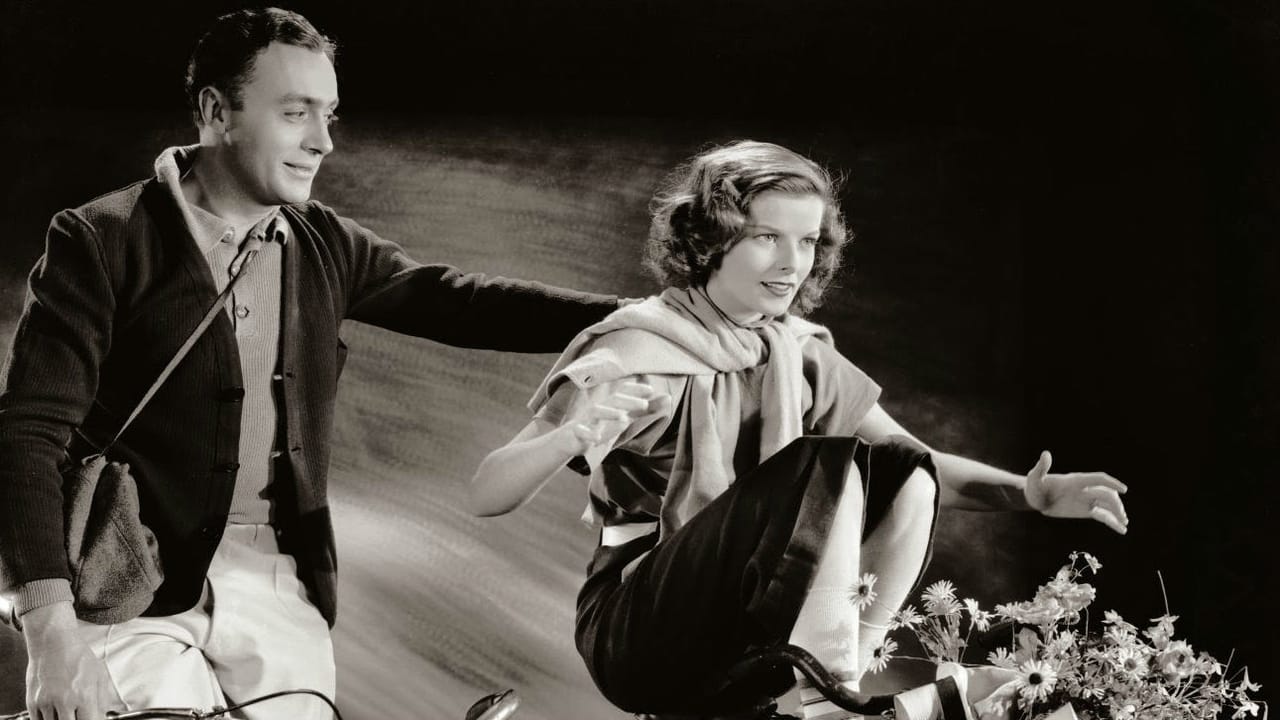



Sadly Over-hyped
recommended
It's a mild crowd pleaser for people who are exhausted by blockbusters.
View MoreThere are moments in this movie where the great movie it could've been peek out... They're fleeting, here, but they're worth savoring, and they happen often enough to make it worth your while.
View More. . . and a "high-end hooker" (which turns out to be five spots on the alphabet for the second-to-last letter). About an hour into this 80-minute BREAK OF HEARTS musical expose, drunken hot-shot orchestra conductor "Franz" offers all the guys in his "Cosmopolitan Symphony" a crack at knowing his wife "Constance" in the "Biblical Sense." Since the opening credits proclaim that BREAK OF HEARTS is the 801st U.S. film to receive the Merciful Papal Award of Approval (or MPAA #801), we can assume that Connie's hourly rental rate is one of the tidbits of information cut out of its final edit. Of course, Connie is also sloshed when she rattles on about her freebie forays into the World of Adultery for Franz's benefit, an indication that sex and booze go together like "love and marriage" in the Eyes of Rome. Unfortunately, viewers never learn which sin is mortal and which is merely venal: Ending Prohibition, or Fooling Around. Perhaps this Catechismic Ambiguity is what's keeping the AFI from burning BREAK OF HEARTS onto one of its Gold DVDs for distribution to the rest of our Galaxy.
View MoreEveryone hates Break of Hearts, but I wonder if its critics have actually seen the film recently or are merely relying on Andre Sennwald's negative review in The New York Times. In one respect at least, Sennwald is very, very wrong, and that is in his description of Moeller's direction as "lifeless and static". In actual fact, the direction is extremely similar to that employed in most modern films and television plays, in that it has an enormous and extraordinary reliance on close-ups. If Moeller's handling is "lifeless and static", I wonder what Sennwald would make of almost every movie release since 1980. Whereas Moeller's close-ups are radiant, full of shimmering light and beauty, most modern efforts are unbearably ugly. And whereas Moeller's close-ups are inventive, imaginative and well-crafted in their inspired use of various camera angles and set-ups, modern usage is invariably monotonous, arbitrary, and obtrusively jerky. When the mood is appropriate, Moeller does move his camera quite dramatically, whereas modern hacks employ a camera that always seems bolted to the floor. True, the radiantly beautiful close-ups of Hepburn and Boyer are achieved with the expert assistance of photographer Robert De Grasse. But even when lighting is not so important, Moeller's mise en scene, his handling of crowd scenes, etc., are likewise laudably effective. Admittedly, the story is old-hat, but it is put across with tremendous panache and sheer imaginative craftsmanship.
View MoreOK, here's the plot: Famous conductor and unknown composer fall in love and marry. He cheats on her, she walks out and won't return, he becomes a drunk, she returns and nurses him back to health. And, yes, that's IT! That's all there is, there isn't any more! It's as if the movie makers decided that, with Boyer and Hepburn on hand, no proper script was necessary. But this bare, banal drama is so devoid of interest no stars could save it, hard though they work to make something out of practically nothing.The absence of complexity makes Boyer's behaviour not only inexplicable but repellent. Why, after only a few months, does he cheat on his wife, whom we are told he loves passionately and who loves him? He tells her the other woman means nothing to him, she is the only woman he loves--typical banal, empty rhetoric of the cheating husband. Later, talking to a friend, he complains that his wife is immature and doesn't want to face real life. What does that mean--she wants him to be faithful? This puts the audience in the position of having to think, Oh, THAT's why he has a mistress--he's French! (Or, as we would say today, It's part of their culture.) Hepburn plays on the piano about a minute of a composition that Boyer inspires, but after that her composing is simply dropped, and her only role is the betrayed wife. She is also given a supportive, understanding boyfriend who looks and acts like her kid brother and who is played by an actor of no attractiveness or interest. These elements also make it seem as if the movie makers just couldn't be bothered.I give it a six for the fabulous leads, who, despite the dreary stuff they are saddled with, do their usual irresistible shtick-- Boyer passionate and seductive, and Hepburn is idealistic and luminous. If, as I do, you love watching them do it, this is worth your time, but you just see them doing it in a vacuum.
View MoreIn the 1930s, there were many "adult" dramas about marital maladjustments. This film is striking because the two main characters, played by Katharine Hepburn and Charles Boyer, have musical careers, she as a composer and he as a famous conductor. The movie is sometimes preposterous, but it has an unusual background of classical music, it's nontraditional in its endorsement of female independence, and it has fine performances.
View More